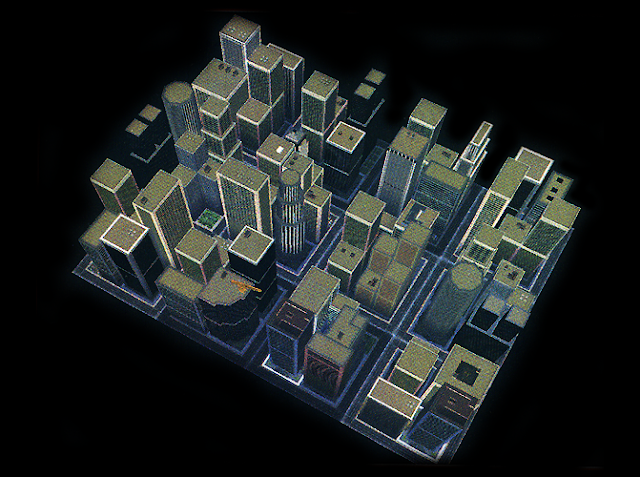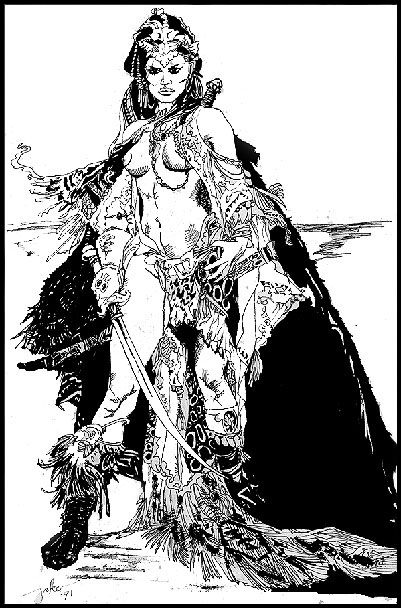During the first few weeks after being commissioned to work on this project, we caught this teaser trailer online...
Later on, we then launched our own teaser trailer for the game. Villains who are involved in the world of Spider-man were used, so we started off with a couple of scenes. I don't remember which one came first, but I can assure that a couple of interiors that I made were put to good use for the CG trailer. To start of, here's a screen shot of the working mesh that's suppose to serve as an interior environment of New York's sewer junction for "Shocker's Secret".
 |
| An untextured working mesh of a supposed NYC underground sewer junction for "Shocker's Secret" done in 3DS MAX. |
And here's the final clip of "Shocker's Secret" used as a one of the two teaser trailer...
Next, here's another working mesh for the interior of a NYC subway coach or carriage. Honestly, I have no idea what the actual interior looks like. But instead, I took the idea from the interior of a subway coach from the Mass Transit Railways (MTR) when I used to reside in Hong Kong. Here's a screen shot of a subway coach's interior used for "Vulture's Secret".
 |
| An untextured working mesh of a subway coach for "Vulture's Secret" done in 3DS MAX. |
And here's the final clip...
After the meshes were worked on and passed on for textures, I was then assigned to start working on two first production levels: the main concourse of New York's Grand Central Station (which will serve as an interior) and the Chrysler Building (which will serve as an exterior). Oh, sweet. Architecture stuff.
 |
| Exterior views of New York's Chrysler Building: (left) View from street level, and (right) building crown. |
 |
| Interior view of Grand Central Station's main concourse. |
So I first started first with Chrysler Building. In most instances, I'd build everything from ground up. But in this case, I started at the top since there are two significant features that makes up this building landmark's character: the top spire, and the eagles (architecturally, they're basically called gargoyles). The model isn't as detailed nor intricate, but it gives the general idea of what NYC landmark it is.
It was later integrated as part of a cityscape environment which served for an aerial battle between Spider-man and Vulture for the scene "Air Duel With Vulture". Image below are samples of the environment during the development stage and it's final release.
 |
| Work-in-progress of Chrysler Building and the environment surrounding the landmark. |
 |
| Rendered version of the finalized cityscape environment with the Chrysler Building (later renamed) as centerpiece. |
And here's a clip of the actual gameplay of the aerial battle with the Chrysler Building as the scene's centerpiece. Unfortunately, due to legal circumstances, we couldn't use the name as well as the building entire appearance since it's privately owned. So we changed a few things such as textures, the gargoyles of the building, as well as it's name have been changed (into Zamkoff Tower) for the game's release. Although we did retain most of the geometry.
So comes the next task of building: Grand Central Station (correctly called Grand Central Terminal), specifically the Main Concourse. With references at hand, I started building the cavernous environment with the huge barrel ceiling with bay windows, walls with huge thermal windows, decorative stairs and balusters (which ended up as texture just to conserve memory), ticket booths, the massive pillars, the ramp to the Lower Concourse (which was intentionally blocked), the information booth in the center with the clock on top, arched corridors with shops and concession area, and even The Campbell Apartment. I was also planning to add Vanderbilt Hall but scratched that idea. Images below are the interior environment during development stage and it's final release.
 |
| The cavernous interior environment of Grand Central Station during development. |
 |
| Rendered version of the finalized interior environment of Grand Central Station's Main Concourse. |
Later on during the project, I was asked to make another version of the Main Concourse but as a night time version. Other than that, a lot of the areas have been sealed while some are opened for reasons that in the previous version, Shocker and his thugs doesn't jump at all, but Scorpion does a lot of jumping. So gameplay design dictates that the battle between Spider-man and Scorpion will be a lot more haste or fast pace. Which also means the need of smoother crawling transitions. So in the night version, I literally ripped out most of the railings, as well as the clock on top of the information booth.
 |
| Another rendered version of Grand Central Station's Main Concourse for Scorpion's Rampage. |
Those aren't the only levels that I worked on. There were more. And quite a handful of them were loosely based from the movie. For instance, a disguised Peter Parker going after the guy who killed Ben Parker (Peter's uncle). In the movie, Peter chased him as he entered an abandoned warehouse. On the game, it was expanded a lot more for the purpose of expanding gameplay. Images below shows sample of the warehouse level with more complexity (compared to the movie), and the final version that's been released for the game.
 |
| Work-in-progress of an interior environment of warehouse. |
 |
| Rendered version of the finalized interior environment of the warehouse for "The Warehouse Hunt". |
And here's the actual gameplay where Peter Parker hunts down Uncle Ben's killer through the warehouse. The level also served as a training level for indoor combat. Not to mention that I enjoyed Bruce Campbell's laughter when he introduced the dark areas where players can take advantage of.
Another set of interiors that I worked on which also shared the same set of geometry and textures (like the case of Grand Central Station) were the office floors of Oscorp. But the scene Breaking and Entering is pretty much like a normal office (at night) and inhabited by security guards and robot sentries unaware of Spider-man's presence while the scene Escape From Oscorp was more of the same office when lights change, alarms go off, and robot sentries are aware of the intruder.
 |
| Mesh work for the interior environment of Oscorp. |
 |
| Final version of the interior environment used for the level Breaking and Entering. |
 |
| Final version of the interior environment used for the level Escape From Oscorp. |
Cityscapes was the majority of the work that I poured into later on since this is where Spider-man does his ultimate spin: Swinging. Below are samples of images from development stage to final versions of a cityscape where it was later used for the scene "Vulture Escapes".
 |
| Work-in-progress version of a cityscape used for the scene "Vulture Escapes". |
 |
| Rendered version of the finalized cityscape environment used for the scene "Vulture Escapes". |
A couple of scenes that came out exclusively for the X-Box are Kraven's Test and The Mighty Hunter. Images below is the environment showing the development stage and the final stage for Kraven's Test. I wanted to do The Mighty Hunter as well but I don't want to hog all the work.
 |
| One of the early works during the development stage for the "Kraven's Test" level (X-Box only). |
 |
| Rendered version of the final indoor zoo environment used for the scene "Kraven's Test" (X-Box only). |
And so after a year and half since our team started, the game was finally released on April 15, 2002. The reception was good, with many critics at the time considering it the best Spider-Man game yet. However, criticism fell on the indoor levels, Tobey Maguire's voice acting, and bad camera, as well as the fact that it was too short and could be completed in 3 hours. Even with these flaws, the game was good enough to get an 8.4 out of 10 from IGN, a 9.3 out of 10 from GamePro, and a 4 out of 5 from GameSpy. Sales were high with 2 million copies of the Sony PlayStation 2 version and over 400,000 on the Nintendo GameCube and Microsoft Xbox in North America alone, allowing the game to enter the "Best-Sellers" of each console. It was recently promoted to "Best of Platinum Hits" on the X-Box.
Here are a few more images of the game...
These are just a few that I worked on Spider-man: The Movie Game. There were other several 3D stuff that I worked on during this project including other interior levels, exterior environments which were usually cityscape levels, as well as super structures that goes on rooftops such as billboards, and water tanks, AC units, and a lot of small items that were littered all over the entire game (like crates and barrels). That's pretty much it for this post. Check some of my other works in Spider-man 2.


























